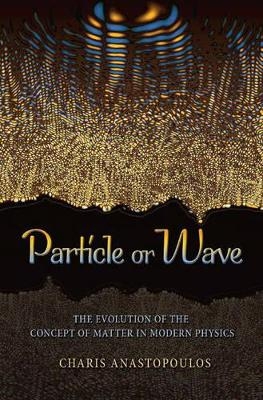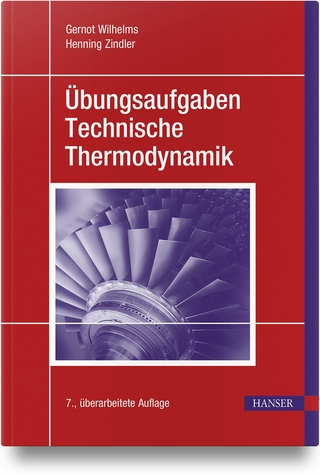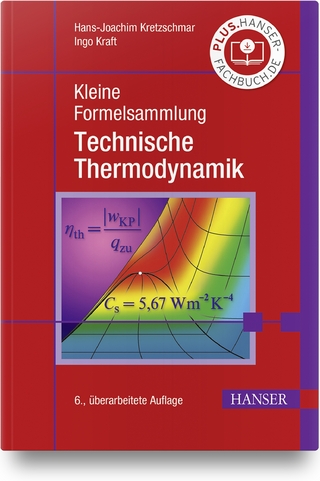
Particle or Wave
Princeton University Press (Verlag)
978-0-691-13512-0 (ISBN)
Particle or Wave is the first popular-level book to explain the origins and development of modern physical concepts about matter and the controversies surrounding them. The dichotomy between particle and wave reflects a dispute--whether the universe's most elementary building blocks are discrete or continuous in nature--originating in antiquity when philosophers first speculated about the makeup of the physical world. Charis Anastopoulos examines two of the earliest known theories about matter--the atomic theory, which attributed all physical phenomena to atoms and their motion in the void, and the theory of the elements, which described matter as consisting of the substances earth, air, fire, and water. He then leads readers up through the ages to the very frontiers of modern physics to reveal how these seemingly contradictory ideas still lie at the heart of today's continuing debates. Anastopoulos explores the revolutionary contributions of thinkers like Nicolas Copernicus, Isaac Newton, and Albert Einstein.
He shows how Einstein's ideas about relativity unify opposing concepts by identifying matter with energy, and how quantum mechanics goes even further by postulating the coexistence of the particle and the wave descriptions. Anastopoulos surveys the latest advances in physics on the fundamental structure of matter, including the theories of quantum fields and elementary particles, and new cutting-edge ideas about the unification of all forces. This book reveals how the apparent contradictions of particle and wave reflect very different ways of understanding the physical world, and how they are pushing modern science to the threshold of new discoveries.
Charis Anastopoulos is a researcher in the Department of Physics at the University of Patras in Greece.
List of Illustrations xi List of Tables xv Acknowledgments xvii sA Note on Terminology xix Introduction 1 Chapter 1: FROM MYTH TO MACHINE Images of Matter from Antiquity to Newtonian Mechanics 9 1.1 First Questions 9 1.2 The Two Paradigms 12 1.3 Images of Synthesis 19 1.4 The Roots of the New Era 25 1.5 Mathematics and the World 29 1.6 The Metaphor of the Machine 41 1.7 Newton's Achievement 47 Chapter 2: PROGRESS! From Newtonian Mechanics to Nineteenth-Century Physics 58 2.1 Newton's Successors 58 2.2 The Atoms of Chemistry 62 2.3 Energy: A First Encounter 69 2.4 Light 75 2.5 From Flow to Field 80 2.6 Electricity and Magnetism 85 2.7 Faraday and the Field 89 2.8 Maxwell's Synthesis 94 2.9 The Triumph of Mechanicism 99 Chapter 3: A NEW ARENA IS BUILT Special Relativity and the Notion of Spacetime 104 3.1 The Coming of the Twentieth Century 104 3.2 Reference Systems and Inertial Frames 105 3.3 Einstein's Solution 112 3.4 The Union of Space and Time 117 3.5 Mass Is Energy! 122 Chapter 4: THE SYMMETRY BENEATH Symmetry in Physics--Spacetime Symmetries 128 4.1 Symmetries in Physics Are Hidden 128 4.2 Noether's Remarkable Theorem 132 4.3 Space and Time Translations 134 4.4 The Poincare Symmetry and the Origin of Particles 138 4.5 General Relativity 143 Chapter 5: THE MACHINE BREAKS DOWN The Development of Quantum Physics 146 5.1 The Birth of Quantum Theory 146 5.2 New Windows to the World 154 5.3 The Adolescence of Quantum Theory 159 5.4 Heisenberg's Revolution 169 5.5 The Riposte: Schrodinger's Wave Mechanics 178 5.6 Conflict and Reconciliation 182 5.7 The Mature Quantum Theory 190 Chapter 6: SO FAMILIAR AND YET SO DIFFERENT Spin, Quantum Phases, and Quantum Statistics 198 6.1 The Discovery of Spin 198 6.2 Quantum Phases 206 6.3 Spin Is Discrete! 212 6.4 Identical Things Cannot Be Distinguished 218 Chapter 7: FORGING THE PERFECT TOOL The Development of Quantum Field Theory 225 7.1 Quantum Light 225 7.2 Dirac's Sea 229 7.3 Antiparticles 232 7.4 QED and Feynman Rules 240 7.5 The Taming of Infinities 247 7.6 The Basic Principles of Quantum Field Theory 254 7.7 Three Elegant Symmetries: P, T, and C 260 Chapter 8: PIECES OF A PUZZLE The Physics of Elementary Particles 270 8.1 Radioactivity and Forces 270 8.2 The Hunt for Symmetries 276 8.3 The Breakdown of Simplicity 286 8.4 Some Simplicity Restored 294 Chapter 9: REACHING THE LIMITS The Gauge Principle and the Standard Model 303 9.1 The Birth of the Gauge Principle 303 9.2 Yang-Mills Theories 308 9.3 Symmetry Is Broken "Spontaneously" 312 9.4 The Force That Binds 329 9.5 The Standard Model 337 Chapter 10: OUTLOOK Unanswered Questions and Open Problems 340 10.1 The Ancient Dilemma Revisited 340 10.2 The Singular Status of Quantum Field Theory 348 10.3 Grand Unified Theories, Supersymmetry, Superstrings, and All That 352 10.4 Where Do We Go From Here? 358 Notes 367 Glossary 397 Guide for Further Reading 403 Index 405
| Erscheint lt. Verlag | 21.7.2008 |
|---|---|
| Zusatzinfo | 6 halftones. 61 line illus. 14 tables. |
| Verlagsort | New Jersey |
| Sprache | englisch |
| Maße | 152 x 235 mm |
| Gewicht | 482 g |
| Themenwelt | Naturwissenschaften ► Physik / Astronomie ► Thermodynamik |
| ISBN-10 | 0-691-13512-6 / 0691135126 |
| ISBN-13 | 978-0-691-13512-0 / 9780691135120 |
| Zustand | Neuware |
| Haben Sie eine Frage zum Produkt? |
aus dem Bereich


